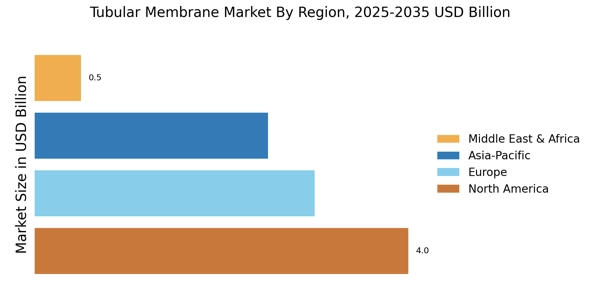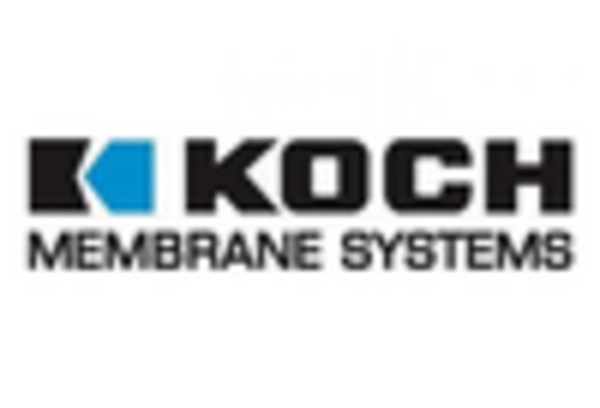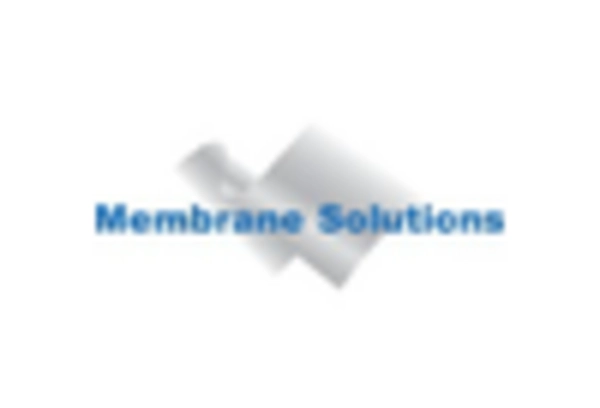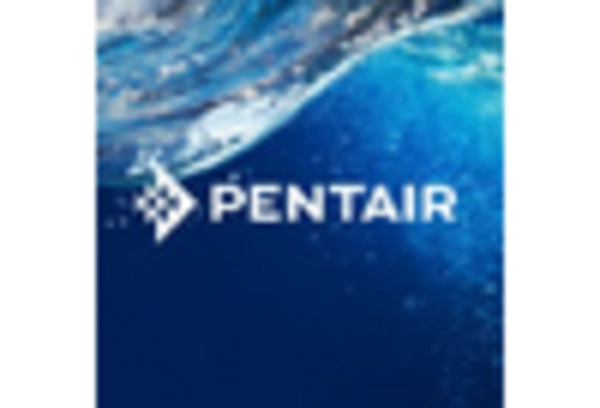Growing Industrial Applications
The Tubular Membrane Market is witnessing a notable expansion in industrial applications. Industries such as oil and gas, pharmaceuticals, and food and beverage are increasingly adopting tubular membranes for their filtration needs. The ability of tubular membranes to handle high solids concentrations and their robustness make them suitable for challenging industrial environments. Market trends indicate that the food and beverage sector, in particular, is leveraging tubular membranes for processes like juice clarification and beer production, where quality and efficiency are paramount. This growing acceptance across diverse industries is likely to drive the market forward, as companies recognize the benefits of integrating tubular membrane technology into their operations.
Investment in Research and Development
Investment in research and development is a critical driver for the Tubular Membrane Market. As competition intensifies, companies are allocating resources to innovate and improve membrane technologies. This focus on R&D is leading to the development of next-generation tubular membranes that offer enhanced performance, durability, and cost-effectiveness. Market Research Future suggest that collaborations between academic institutions and industry players are fostering breakthroughs in membrane technology, which could lead to new applications and increased market penetration. Furthermore, as industries strive for greater efficiency and sustainability, the emphasis on R&D is expected to yield significant advancements in tubular membrane solutions, ultimately benefiting the market as a whole.
Rising Demand for Water Treatment Solutions
The Tubular Membrane Market is experiencing a surge in demand for advanced water treatment solutions. This trend is driven by increasing concerns over water scarcity and the need for efficient wastewater management. As urbanization accelerates, the pressure on existing water resources intensifies, prompting industries and municipalities to seek innovative filtration technologies. Tubular membranes, known for their high permeability and fouling resistance, are becoming essential in various applications, including municipal water treatment and industrial processes. Market data indicates that the water treatment sector is projected to grow significantly, with tubular membranes playing a pivotal role in meeting the rising demand for clean water. This growth is likely to be further fueled by investments in infrastructure and technology aimed at enhancing water quality and availability.
Increased Focus on Environmental Regulations
The Tubular Membrane Market is significantly influenced by the tightening of environmental regulations across various sectors. Governments are implementing stricter guidelines to control pollution and promote sustainable practices, which in turn drives the adoption of advanced filtration technologies. Tubular membranes, with their ability to effectively remove contaminants and reduce waste, are becoming a preferred choice for industries aiming to comply with these regulations. Market data reveals that sectors such as pharmaceuticals and food processing are particularly affected, as they face increasing scrutiny regarding their environmental impact. This regulatory landscape is likely to propel the demand for tubular membranes, as companies seek to enhance their sustainability profiles while meeting legal requirements.
Technological Innovations in Membrane Filtration
Technological advancements in membrane filtration are reshaping the Tubular Membrane Market. Innovations such as the development of new materials and improved manufacturing processes are enhancing the performance and efficiency of tubular membranes. These advancements enable higher flux rates and better rejection of contaminants, making tubular membranes more attractive for various applications, including food and beverage processing, pharmaceuticals, and chemical industries. Market analysis suggests that the introduction of smart membranes, which can adapt to varying conditions, may further drive growth in this sector. As industries increasingly prioritize efficiency and sustainability, the demand for technologically advanced tubular membranes is expected to rise, positioning them as a key component in modern filtration systems.


















Leave a Comment